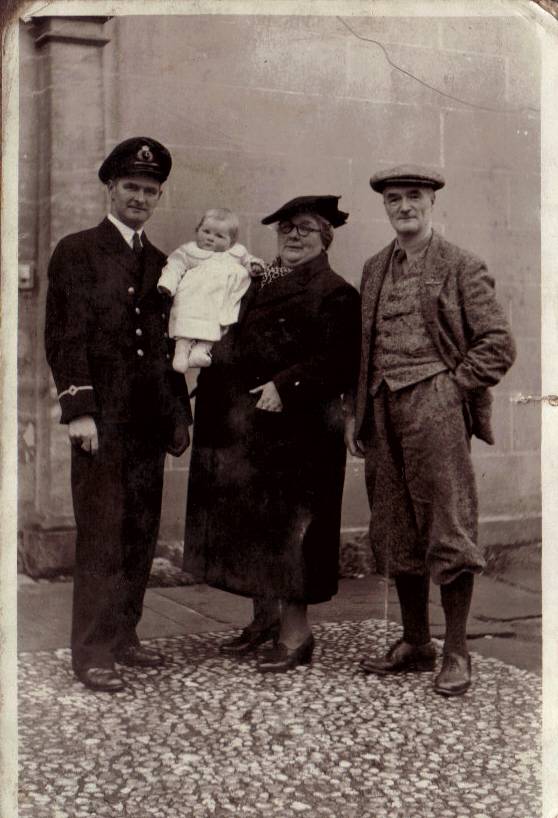The big lobby shock at Elmbank
JM Wright
The big lobby shock at Elmbank
“When my cousin, Margaret Wright, was born in 1941, WW2 was raging and her father, Captain RMWright, Ronnie, was running the gauntlet for the Union Castle shipping company, plying from Southampton to Durban with the Royal Mail. Baby Margaret starred in quite a few photographs, mostly in front of Elmbank, my grandparents’ home in Millport. Margaret and her mother Alice lived there for a while during WW2, prior to moving to a flat in ‘Brandy Castle’ just off Kames Bay at the other end of town. After the move, their visits to Elmbank continued to be frequent and young Margaret was by then both tall enough and clever enough to go alone to the big bathroom at the end of the lobby between the two ground-floor flats (whose occupants would share it during the holiday seasons after the end of WW2).
“I clearly remember that room. It seemed huge to me as a child: such a long way up to the ceiling. It was enormous, not that it dwarfed the old cast iron bath, because it too looked huge, just on the right behind the opened door. The lavatory pan with its high cistern, dangling chain and shiny, glazed clay handle, lay beyond the bath by the big, frosted glass window. Access to it was along the side of the bath. ‘Mummy I need to go to the toilet!’ announced Margaret suddenly on one such visit and before her mother could turn to acknowledge her, she was off into the lobby, making for the big door. She’d been able to reach the handle for a while by then; she was a big girl now and could manage on her own. Preparing to dart past the bath, she gripped the handle and turned it.
“The door suddenly swung fully open, revealing an astonishing sight beyond… LOBSTERS! The bath, full of cold water, was heaving with live lobsters trying to escape. Even more alarming to the wee adventurer, some had already achieved partial success and were slithering over the edge of the bath onto the wet floor, perhaps wondering in lobster think, ‘What way next to the salty bay?’ Well, they may not have known it but that was right past Margaret and that’s where the vanguard was headed, claws wide in self-defence, ready for all-comers. Her eyes popped out, challenging the lumbering crustaceans’ genetic advantage – on stalks.
“Control quickly passed to the adults, but the brief image of those claws would remain with Margaret long after she went to work at the Marine Biological Station at Keppel a decade or so later. (The lobsters there were securely incarcerated in their deep glass tanks.) In fact, when she told me this tale, she was in her late-seventies, out in the sunshine for her daily walk and looking great, despite almost four months of COVID-19 isolation and restraint. When we talked, she did comment on our grandparent’s island lifestyle of the 1940s, which she clearly remembered. ‘They lived like royalty you know - hare, rabbit, pheasant, crab, lobster, freshest of fish/shellfish of many varieties, vegetables and fruit from the garden: not to mention the sheep’s heid broth!’ All of that, when much of the rest of Britain was subsisting on WW2 rations well into the 1950s. Such was Elmbank’s residents’ island life - catching, usually controlling, and later cooking their seafood, especially the crustaceans and game. Lobsters never did rule the lobby, but that was thanks to wee cousin Margaret.”
As told by JMWright Pictured is Margaret as a baby with her father and grandparents outside Elmbank
More information on visiting the area can be found here.
